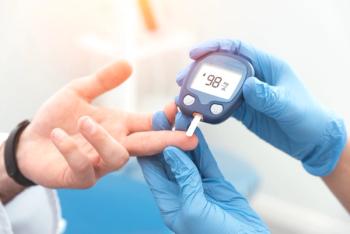
2020 spike in SIDS likely due to diagnostic shifting, not COVID-19
Though an increased rate of sudden infant death syndrome (SIDS) occurred from 2019 to 2020, a recent study suggests the increase wasn’t directly related to the COVID-19 pandemic.
After a declining linear trend in sudden infant deaths (SIDS) from 2015 to 2019, a 15% increase in SIDS occurred from 2019 to 2020. According to a study published in Pediatrics, the increase was likely due to diagnostic shifting and reporting practices rather than direct and indirect effects of the COVID-19 pandemic.
The United States saw a record low infant mortality rate, 541.9 infant deaths per 100,000 live births, in 2020. The spike in SIDS from 2019 to 2020 resulted in SIDS going from the fourth leading cause of infant death to third.
In the study, sudden unexpected infant death (SUID) rates were examined as a group, by cause, race, and ethnicity. Period-linked birth and infant death files in the United States from 2015 to 2020 were used to examine changes in SUID before and during the COVID-19 pandemic. According to authors, 2020 is currently the last year with available, final national SUID data.
Cause-specific SUID rates per 100,000 live births were calculated with 95 confidence intervals. P values greater than .05 were considered significant.
Three underlying cause of death classifications were included in SUID data, coded per the International Classification of Diseases, 10th revision, used for official reporting of mortality statistics in the United States. Classifications were SIDS (R95), unknown cause (R99), and accidental suffocation and strangulation in bed (ASSB) (W75).
In 2020, authors found that of the 19,446 infant deaths, 3328 (17.1%) fell under SUID classification, combining R95, R99, and W75. Though SUID rate per 100,000 live births increased from 89.5 in 2019 to 92.1 in 2020, the increase was not significant according to authors. Further, authors state no significant linear trend was observed from 2015 to 2019.
The ICD-10 code, U07.1, should be reported when COVID-19 is assumed to have contributed or caused a death. In the study, COVID-19 status was estimated using this code, which was implemented March 24, 2020, and was used retroactively for the entire year.
The SIDS rate was higher in all study years for specific causes of SUID than for unknown cause and ASSB. The SIDS rate increase from 2019 to 2020 (P < .001) per 100,000 live births went from 33.3 to 38.2 respectively, marking a significant increase unlike the overall SUID rate (P = .24), authors state. The increase followed a significant decreasing linear trend in SIDS rates demonstrated from 2015 to 2019 (< 0.001). R99 and ASSB did not change significantly from 2019 to 2020, and from 2015 to 2019, no significant trend was observed.
COVID-19 was listed as an underlying cause of death in 35 of 2020’s 19,446 infant deaths (0.2%). Among the 3328 SUID in 2020, less than 10 deaths had a COVID-19 code indicating an additional, not underlying, cause of death, authors state.
Though the overall SUID rate from 2019 to 2020 had no significant increase, the race and ethnicity analysis demonstrated significant increase SUID rates for non-Hispanic Black infants during the same time frame. SUID rates in 2020 per 100,000 live births was highest among non-Hispanic Black (214.0) and non-Hispanic American Indian or Alaskan Native (AIAN) infants (205.1). The rate is nearly 3 times the rate for non-Hispanic White infants (75.6). During 2017 to 2019, a significant decreasing trend for non-Hispanic White infants was observed (P = .02). Though SUID rates for Hispanic and non-Hispanic Asian infants generally increased, no significant trends were observed. During 2017 to 2020, the SUID ratio for non-Hispanic Black infants compared to non-Hispanic White infants increased yearly, from 2.2 in 2017 to 2.8 in 2020.
Analysis did not definitively demonstrate whether SUID rates changed because of the COVID-19 pandemic, a limitation of the study according to authors. They wrote “without more years of data, the direct effects of COVID-19 infection on SUID rates could not be determined.”
According to the study, authors believe their findings, “support evidence that the increased SIDS rate in 2020 as compared to 2019 was likely unrelated to direct effects of the COVID-19 illness but may be attributed to diagnostic shifting in cause-specific SUID rates. Although an overall increased SUID trend during 2015 to 2019 was not observed, continued monitoring is critical; we do not yet understand how the Delta and Omicron COVID-19 variants impacted SUID.”
Unexpected significant increased rates of SUID from 2019 to 2020 among non-Hispanic Black infants require further investigation and interventions to address disparity compared to non-Hispanic White infants, authors concluded.
Reference
Shapiro-Mendoza CK, Woodworth KR, Cottengim CR, et al. Sudden unexpected infant deaths: 2015–2020. Pediatrics April 2023;151(4):e2022058820. doi:10.1542/peds.2022-058820
Newsletter
Access practical, evidence-based guidance to support better care for our youngest patients. Join our email list for the latest clinical updates.














